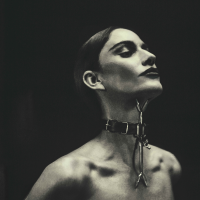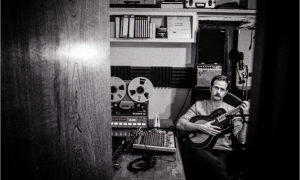
The set expands on a 10-song single LP originally released two years after Redding's performances, and about a year after his death in 1967 at age 26 in a plane crash. The new CDs capture the electricity of the music, presenting them for the first time in complete performances as Whisky fans heard them. But it's hard to convey the full influence his shows had on the crowd.
“It was unbelievable," said guitarist, singer and songwriter Ry Cooder, who at the time was a member of the Rising Sons (along with Taj Mahal), the opening act for Redding and his 10-piece Memphis-based band on all four nights of their stint. “He'd get up, stomp his foot, wave his arm, grab a microphone and sing with such searing intensity, I thought, this man's going to have a heart attack if he keeps this up. He's not going to make it. But it was good a great R&B show, the likes of which I'd never seen."
That's because Redding represented a different school of R&B and soul music than had been experienced in Los Angeles.
Whisky owner Elmer Valentine, who also owned the Trip club farther up Sunset Boulevard, had booked many of Motown's top acts to play the Trip: the Temptations, Martha & the Vandellas, acts that were schooled in the smooth, choreographed Motown style that had helped ease white audiences into black music at a time of tremendous racial tension.
“They would need an opening act, and for some reason they chose us for a lot of them," said Cooder, “probably because we were an integrated band, and they knew the audience would be predominantly black that would come to Hollywood to those shows."
For Cooder, the difference between Motown's brand of pop-R&B and Redding and his entourage was as great as that separating Detroit from Memphis.
“This was a real traveling R&B show," Cooder said. “It wasn't spruced up for big city consumption; it was a revue with a full horn section really straight-ahead, working musicians from Memphis."
Other R&B and blues musicians who came through Los Angeles typically played clubs on Central Avenue not Hollywood, which was heavily given over to rock acts such as the Byrds, the Doors, Buffalo Springfield and the like.
“People don't realize how segregated it was," said Cooder, describing himself as an awestruck “white boy from Santa Monica" when he played those Whisky gigs at the age of 19. “Black musicians didn't come to Sunset. It was a white scene, and you were starting to see the youth-market concept. You had surf music, and the psychedelic thing was catching on you could see how it was something that could be marketed to teens."
Redding's appearances helped plant the seeds for more interaction among white and black audiences.
“The Whisky was not an upscale place it was rough, sort of, and there was an interesting mix of black people and white people, and you started to see some celebrities show up," Cooder recalled. “Word got out that this was a hot show; this was a super hot show, nothing like anyone had seen in Los Angeles, unless you went to the 5/4 Ballroom, where you could have seen people like [blues guitarist] T-Bone Walker or Count Basie. But not on the Sunset Strip, which was still very segregated."
Cooder found Redding to be personally engaging and open to sharing ideas, one musician to another upstairs at the Whisky. “He was a high-strung guy, but extremely friendly and good natured, because musicians are pretty good natured people.
“These were southern guys, nice folks, quiet, and Otis would be up there in the dressing room while the band was warming the audience up. He'd get his tie on, then put his coat on. One of the other musicians came up and Otis said, 'Hey man, you catch your groove?' And he said 'Yeah, I caught a groove.' And Otis said, 'Well, I guess I'll go down.' He was totally casual, because he'd done this 1,000 times. I thought, 'That's neat and now he's going to go down and fire up this band like a locomotive and get it going."
Redding's version of the Rolling Stones “(I Can't Get No) Satisfaction" was on the charts at the time of the Whisky performances, so he played it in virtually every set, sometimes twice. Consequently, it shows up five times amid the three sets chosen for the “Live on the Sunset Strip" collection.
“He came out and they played it three times as fast as the record I could not believe how fast he did that song," Cooder said. “And they did it perfectly. They didn't overplay you couldn't at that speed. Nobody soloed, nobody did anything fancy because they knew, he's the star.... It was good, flat out, top-of-the-line soul music."





























